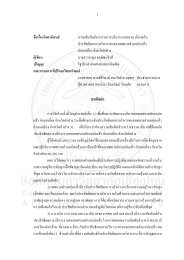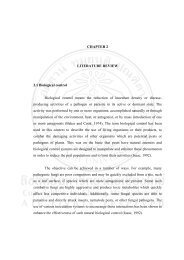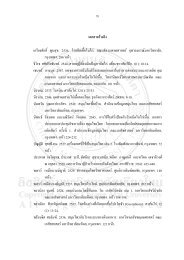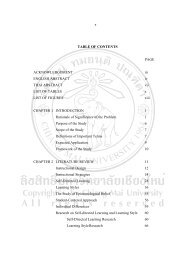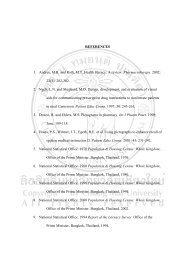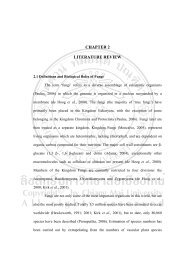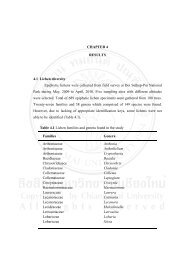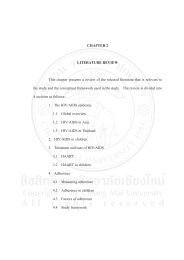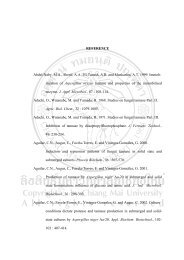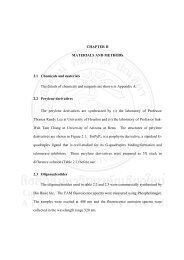CHAPTER I INTRODUCTION The use of amniotic fluid to assess the ...
CHAPTER I INTRODUCTION The use of amniotic fluid to assess the ...
CHAPTER I INTRODUCTION The use of amniotic fluid to assess the ...
Create successful ePaper yourself
Turn your PDF publications into a flip-book with our unique Google optimized e-Paper software.
3<br />
extra-embryonic tissues during <strong>the</strong> process <strong>of</strong> fetal development and growth<br />
(Prusa et al., 2003; Fauza, 2004; Tsai et al., 2004). Amniotic cells could transform in<strong>to</strong><br />
several cells and may be <strong>the</strong> source <strong>of</strong> powerful <strong>the</strong>rapy for human congenital disorder<br />
and as a potential source <strong>of</strong> pluripotent stem cells (Kakishita, 2003 and Tsai et al.,<br />
2005). In addition, Delo et al. (2006) mentioned about number <strong>of</strong> promising novel<br />
<strong>the</strong>rapeutic concepts using <strong>the</strong>se cells in tissue engineering, cell transplantation and<br />
gene <strong>the</strong>rapy. Current stem cell based approaches could be employed in cellreplacement<br />
<strong>the</strong>rapy or drug treatments. Thus, <strong>amniotic</strong> cells are intriguing as a<br />
possible source <strong>of</strong> pluripotent stem cells for cell-based <strong>the</strong>rapeutics, and do not raise<br />
<strong>the</strong> ethical concerns associated with <strong>use</strong> <strong>of</strong> embryonic stem cells (Kim et al., 2007).<br />
Fur<strong>the</strong>rmore, many experiments carried out in vitro are for <strong>the</strong> sole purpose <strong>of</strong><br />
determining <strong>the</strong> potential cy<strong>to</strong><strong>to</strong>xicity <strong>of</strong> <strong>the</strong> compounds being studied. Ei<strong>the</strong>r beca<strong>use</strong><br />
<strong>the</strong> compounds are being <strong>use</strong>d as pharmaceuticals or cosmetics or must be shown <strong>to</strong> be<br />
non<strong>to</strong>xic or designed as anticancer agents and cy<strong>to</strong><strong>to</strong>xicity may be crucial <strong>to</strong> <strong>the</strong>ir<br />
action (Freshney, 2000). In this study, <strong>the</strong> two new <strong>amniotic</strong> cell lines are studied for<br />
<strong>the</strong>ir potential <strong>use</strong> in cy<strong>to</strong><strong>to</strong>xic assay. <strong>The</strong> response <strong>of</strong> <strong>the</strong>se cells <strong>to</strong> a standard<br />
component <strong>of</strong> pharmaceutical and cosmetic compound will be provided with <strong>the</strong><br />
effective inhibi<strong>to</strong>ry concentrations.<br />
OBJECTIVES<br />
This study was initiated with <strong>the</strong> aims <strong>to</strong>;<br />
(i) Establish <strong>the</strong> homogenous <strong>amniotic</strong> cell lines from <strong>amniotic</strong> <strong>fluid</strong> <strong>of</strong><br />
Thais by cell cloning.<br />
(ii) Study some characteristics and examine <strong>the</strong> Stemness <strong>of</strong> <strong>the</strong> developed<br />
cell lines.<br />
(iii) Study <strong>the</strong> <strong>to</strong>xicity response potential <strong>of</strong> <strong>the</strong> cell lines in cy<strong>to</strong><strong>to</strong>xicity<br />
assay.




